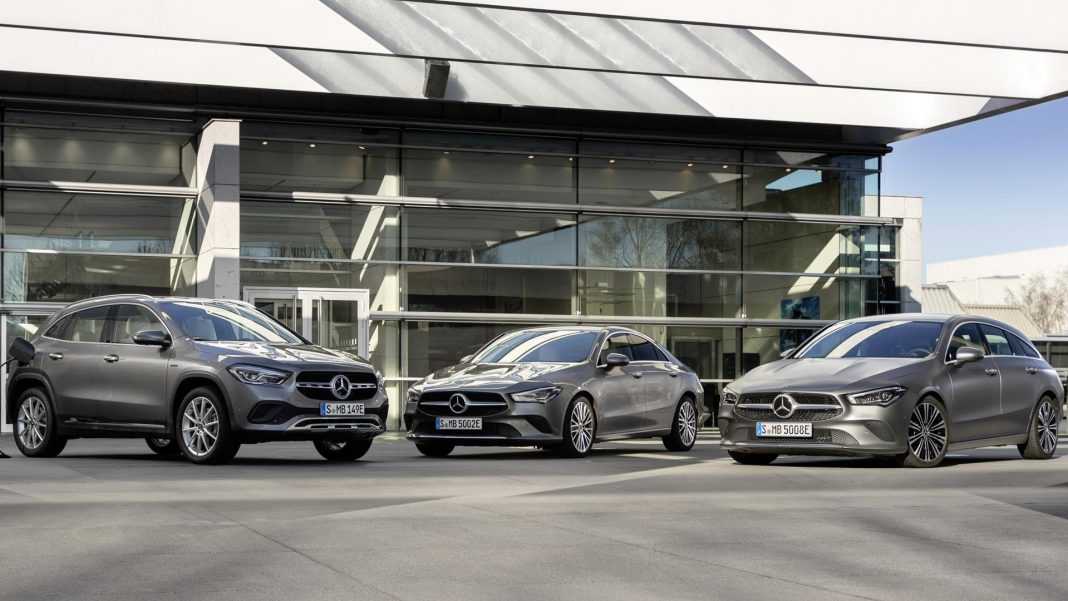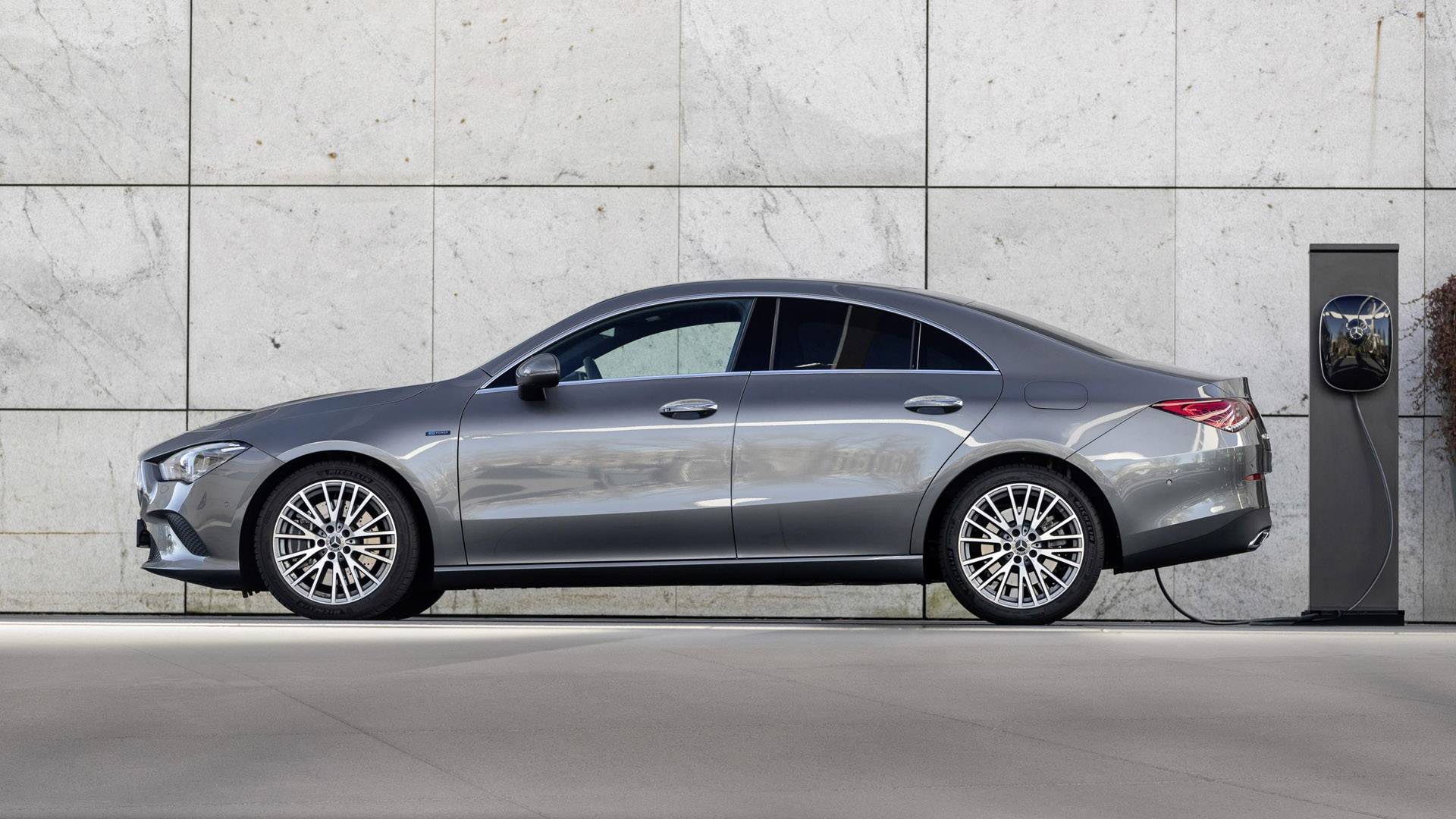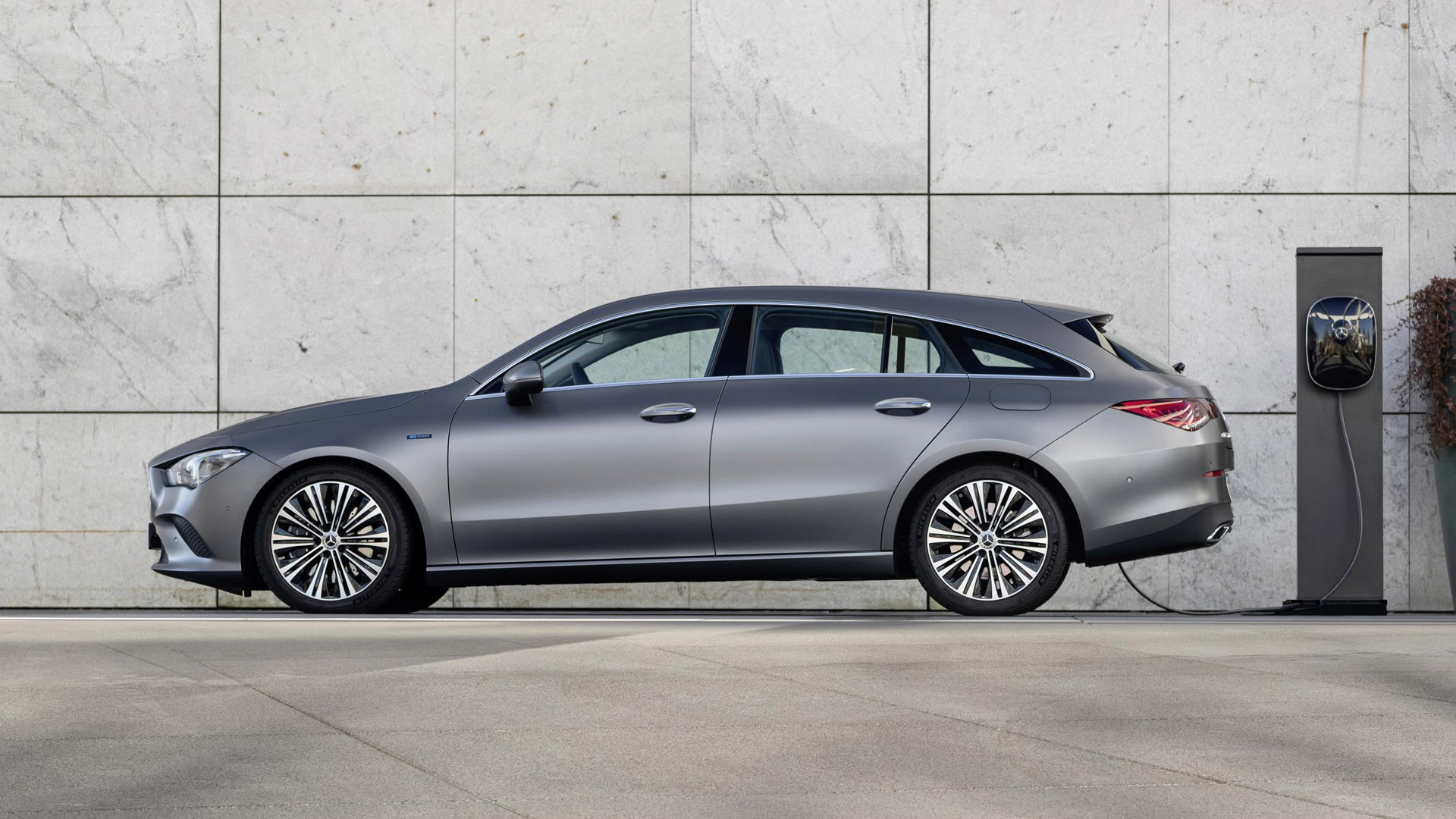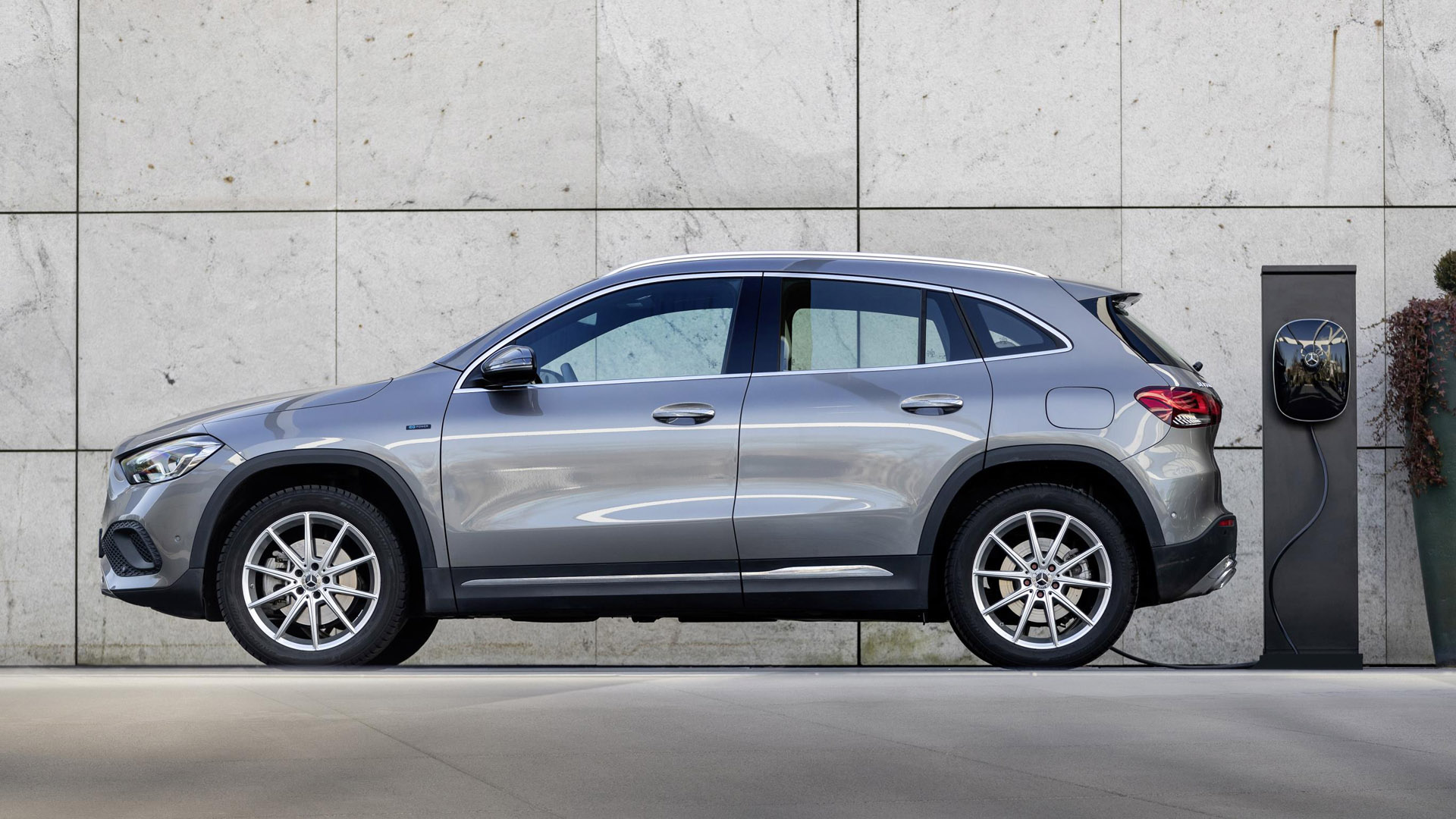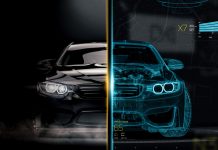Mercedes‑Benz Cars is continually increasing its range of plug-in hybrids under the EQ Power label. With the CLA 250 e Coupé, CLA 250 e Shooting Brake and GLA 250 e, Mercedes-Benz is completing the range of EQ Power models in the compact-car family with the third-generation hybrid drive system. The new models can be ordered in spring of this year.
For the new compact vehicles with EQ Power, (electric) driving pleasure and suitability for everyday use are to the fore. This is illustrated by the models’ highlights:
- Electric operating ranges of 71-79 km (NEDC)
- Electric output 75 kW
- System output 160 kW
- System torque 450 Nm
- Alternating-current (AC) charging system up to 7.4 kW
- Direct-current (DC) charging system at max. 24 kW
- Hardly any restrictions on the load compartment.
The vehicles belonging to Mercedes-Benz’s compact car family feature transversely mounted engines. A compact hybrid traction head has been developed for the 8G-DCT dual clutch transmission which follows the same technical principles as the corresponding component on the vehicles with a longitudinally installed engine. It is a permanently excited synchronous machine as an internal rotor.
Read next: Polestar Precept: The future of the electric car
The stator is permanently integrated in the traction head housing, while the low-loss wet clutch is incorporated in the motor’s rotor. On-demand stator and rotor cooling allow use of the electric motor’s peak and continuous output without any problems.
For the first time on a Mercedes-Benz vehicle, the combustion engine is started by the electric motor – the compact hybrids do not have a separate 12-volt starter.
Mercedes‑Benz CLA Coupé, CLA Shooting Brake and GLA: Powertrain
The electric machine achieves 75 kW. Together with the 1.33-litre four-cylinder engine this produces a system output of 160 kW (218 hp) and a system torque of 450 Nm. Thanks to the EQ Power of the electric motor, these vehicles respond to the accelerator very rapidly and deliver impressive performance: the A 250 e, for example, requires 6.6 seconds for the sprint from 0 to 100 km/h, and its top speed is 235 km/h (see next page for further data).
A lithium-ion high-voltage battery with a total capacity of approx. 15.6 kWh is used as an electric energy storage unit. The new compact models can be charged with alternating current or direct current. A corresponding vehicle socket is located in the right-hand side wall of the vehicles. This means that the compact plug-in hybrids can be charged at a 7.4 kW wallbox with alternating current (AC) within 1 h 45 min from 10-100 percent SoC (State of Charge). For direct-current (DC) charging at 24 kW, the battery can be charged from 10-80 percent SoC in around 25 minutes.
The batteries are supplied by the wholly owned Daimler subsidiary Deutsche ACCUMOTIVE. The high-voltage battery is water-cooled and weighs approx. 150 kg.
Read next: Toyota and Hino join forces to develop a new hydrogen fuel cell truck
Mercedes‑Benz CLA Coupé, CLA Shooting Brake and GLA: Space
An innovative exhaust system allows exceptionally clever packaging: to enable only minimal reduction in boot capacity compared with the sister models without hybrid engines, the exhaust ends in a centrally positioned outlet under the vehicle floor, with the rear silencer housed in the transmission tunnel. Integrating the fuel tank into the axle installation space creates additional room beneath the rear seats for the high-voltage battery.
The compact vehicles are equipped with third-generation plug-in technology. Its functions include in particular the intelligent, route-based operating strategy, taking factors such as navigation data, speed limits and route into account. The operating strategy takes into account the entire planned route and prioritises the electric driving mode for the most sensible route sections in each case.
Read next: Aiways confirms its new U5 all-electric SUV will be made available in Europe
Mercedes‑Benz CLA Coupé, CLA Shooting Brake and GLA: Technology
With the launch of MBUX (Mercedes-Benz User Experience) the previous plug-in operating modes of all EQ Power models have been converted to drive programmes. That means that in every Mercedes-Benz plug-in hybrid the new drive programmes “Electric” and “Battery Level” are available. This is the case from the outset for the compact models. Maximum e-performance can be experienced in “Electric”. The combustion engine is only engaged if the driver uses kickdown on the accelerator pedal. In the “Electric” programme, the energy recovery level can also be selected via paddles behind the steering wheel. The paddles on the steering wheel enable the selection of five different recuperation levels (DAUTO, D+, D, D– and D—).
Comfort, ECO and Sport modes are also available. According to the given requirements, the driver is thus able to give priority to electric driving, place the emphasis on driving dynamics in combined drive mode or give preference to combustion mode in order to save electric range, for example.
One important comfort feature is the pre-entry climate control prior to starting a journey, which can also be activated conveniently by smartphone. The towing capacity of the compact hybrids is impressive at 1600 kg (braked).
The data at a glance
| A 250 e | A 250 e Saloon | B 250 e | CLA 250 e Coupé | CLA 250 e Shooting Brake |
GLA 250 e | |
| Number of cylinders/arrangement | 4/in-line | |||||
| Displacement (cc) | 1332 | |||||
| Petrol engine rated output (kW/hp at rpm) |
118/160 at 5500 +/- 1.5% | |||||
| Petrol engine rated torque (Nm at rpm) | 250 at 1620 | |||||
| Electric motor rated output (kW) | 75 | |||||
| Electric motor rated torque (Nm) | 300 | |||||
| System output (kW/hp) | 160/218 | |||||
| System torque (Nm) | 450 | |||||
| Acceleration 0-100 km/h (s) | 6.6 | 6.7 | 6.8 | 6.8 | 6.9 | 7.1 |
| Top speed (km/h) | 235 | 240 | 235 | 240 | 235 | 220 |
| Top speed, electric (km/h) | 140 | |||||
| Combined fuel consumption from (l/100 km) |
1.5-1.4 | 1.4 | 1.6-1.4 | 1.5-1.4 | 1.6-1.4 | 1.8-1.6 |
| Combined CO2 2 emissions from (g/km) |
34-33 | 33-32 | 36-32 | 35-31 | 37-33 | 42-38 |
| Total battery capacity (kWh) | 15.6 | |||||
| Combined electrical consumption (kWh/100 km) | 15.0-14.8 | 14.8-14.7 | 15.4-14.7 | 15.1-15.0 | 15.5-14.8 | 16.1-15.5 |
| NEDC electric range (km) | 74-76 | 75-77 | 70-77 | 72-79 | 69-76 | 64-71 |
| WLTP electric range (km) | 60-68 | 61-69 | 56-67 | 60-69 | 58-68 | 53-61 |
| Prices starting at (euros) | 36,943.55 | 37,300.55 | 37,663.50 | – | – | – |
90 percent of everyday driving can be completed in all-electric mode
With the help of the free EQ Ready App, available free of charge, Mercedes-Benz has established how long the journeys of people interested in e-mobility are on average. The results show that
- 90 percent of all journeys are shorter than 50 kilometres,
- 96 percent of all journeys are shorter than 100 kilometres and
- 99 percent of all journeys are shorter than 400 kilometres
The range of average distances per journey by interested persons varies in the individual markets, extending from just over eight kilometres in Hong Kong to slightly more than 27 kilometres in the Netherlands, where there is particularly high interest in e-mobility. This means that 90% of everyday trips can be completed exclusively under electric power with Mercedes-Benz’s current plug-in models.
Read next: Kia Sorento: Everything you need to know on this hybrid SUV
Mercedes‑Benz CLA Coupé, CLA Shooting Brake and GLA: Mercedes me Charge
As well as using the domestic power supply, e.g. at a Mercedes-Benz Wallbox, convenient and uncomplicated charging is possible during the journey, too. That’s because the MBUX infotainment system (Mercedes-Benz User Experience) assists the driver in finding charging stations. The MBUX system understands natural speech, allowing the driver to start a search simply by saying “Hey Mercedes, find charging stations nearby”.
Via Mercedes me Charge, drivers of a plug-in hybrid model can optionally obtain access to one of the world’s largest charging networks, with over 300 different operators in Europe alone (municipalities, car parks, motorways, shopping centres, etc.). Thanks to navigation, Mercedes-Benz customers can find these stations easily and can gain convenient access to the charging stations via the Mercedes me Charge card, the Mercedes me App or directly from the car.
No separate contracts are necessary for this: apart from simple authentication, customers benefit from an integrated payment function with simple billing after they have registered their payment method once. Each charging process is booked automatically. The individual charging processes are clearly listed in a monthly invoice.

